NB In List | Chhatrapati Shivaji Maharaj ki jai! 'Maratha Military Landscapes of India:' India’s nomination for UNESCO World Heritage 2024-25
Let us have a look at these forts that will officially represent “Maratha Military Landscapes of India” on international platforms
Total Views |
New Delhi, Jan 30: The “Maratha Military Landscapes of India” will be India’s nomination for recognition as UNESCO World Heritage List for the year 2024-25. Interestingly, the twelve component parts of this nomination are not all from Maharashtra but there is one from Tamil Nadu as well. The foremost reason to nominate these components that are distributed across diverse geographical and physiographic regions, is that they showcase the strategic military powers of the Maratha rule.
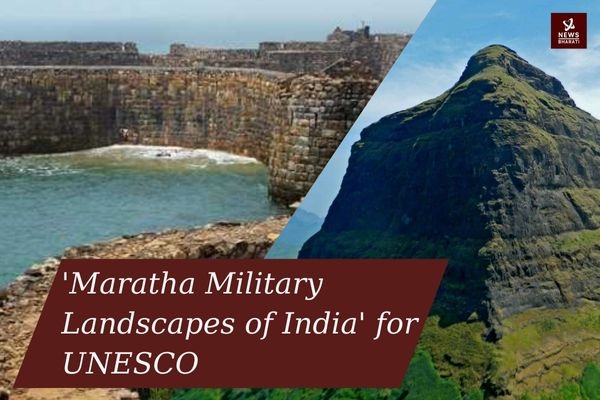
Let us know what these components are that will officially represent “Maratha Military Landscapes of India” on international platforms;
1. Salher fort
The fort of Salher, located in Nashik today, is the highest fort in the Sahyadri mountains. Geographically speaking, it is the second highest peak in Maharashtra after Kalsubai, standing at 1,567 metres (5,141 ft). According to local history, the tale of Salher goes much earlier than Maratha history, as it is believed that Bhagwan Parshuram performed his Tapascharya (meditated) at the same place. It is believed that it was Bhagwan Parshuram who brought Konkan into existence, as he had won all earth and had given it all as donation. Bhagwan Parshuram generated land for himself to live in, by pushing the sea back with his arrows, giving birth to the land of Konkan and this is exactly the place from where he shot his arrow.
In 1671, the fort of Salher was came under the kingdom of Chhatrapati Shivaji Maharaj, the great Maratha King who conceived the notion of Hindavi Swarajya, and brought it to reality. In a fierce battle for the fort that took place between the Marathas in 1672, around one lakh soldiers fought from both sides. Although several soldiers martyred to secure the fort of Salher, Chhatrapati Shivaji Maharaj's army won the historic battle of Salher.
The battle of Salher is historic for two main reasons; firstly, out of all the face to face battles between Mughal & Maratha armies, this is the earliest battle won by Marathas. Secondly and more importantly, all the wealth that Maratha troops acquired after raiding Surat was first brought to Salher, then taken to the Maratha capital forts. Besides as per the most basic military principles, the one who rules the elevations, rules the territory.
2. Shivneri fort
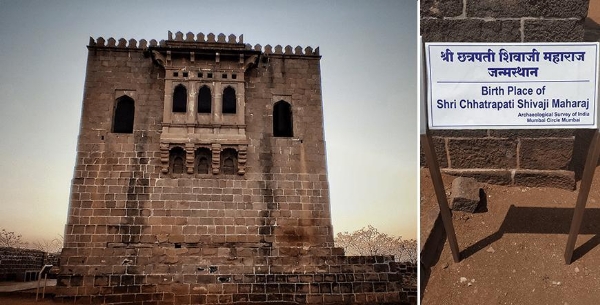
The fort of Shivneri is renowned as the birthplace of Chhatrapati Shivaji Maharaj. It is the place that gave the helpless indigenous people of the land that is today referred as Maharashtra, a ray of hope with the birth of Adilshahi Sardar Shahaji & Jijabai's son, Shivba, who later became 'Chhatrapati' Shivaji Maharaj. The name 'Shivba' was also improvised from his birthplace, as the goddess that protected the fort of Shivneri is 'Shivai Devi'. The first Maratha ruler, Chhatrapati Shivaji Maharaj had spent his childhood on this fort and thus, psychological foundation of 'Hindavi Swarajya' in the mind of young Shivaji was laid in this very place.
Militarily speaking, the fort of Shivneri is considered to be a highly defensible one, as it has steep rocks on four sides and a strongly built citadel at the centre. The bold structure of the fort was precisely the reason why Shahaji chose it to be home for Jijabai during her pregnancy & for Shivaji's birth.
3. Lohgad
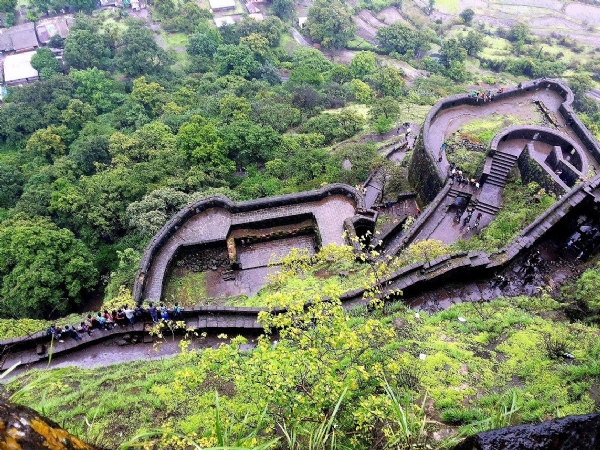
Located in Lonavala, at an elevation of 1,033 m (3,389 ft), the fort of Lohgad shares its long-Maratha legacy in medieval period, with 5 years of Mughal captivity. However, prior to Maratha rule, the fort has witnessed the occupancy of legendary dynasties of ancient Bharat, such as the Satavahanas, Chalukyas, Rashtrakutas, Yadavas and others in medieval period being the Nizams.
Considering its strategic location, Chhatrapati Shivaji Maharaj captured Lohgad in 1648, merely 2 years after taking the oath of Swarajya at Raireshwar, when the young Shivaji was only 18 years old. However, since the prevailing circumstances were not much in favor of the young army of Marathas and the Maratha Chhatrapati was forced to surrender the fort to Mughals in 1665, settled with the renowned 'Treaty of Purandar'.
After Chhatrapati Shivaji Maharaj recaptured the fort in 1670, the foremost purpose of the fort was to use it as a treasury. Among the few forts where the loot from the raids of Surat was hoarded, Lohgad was an important one.
4. Khanderi fort
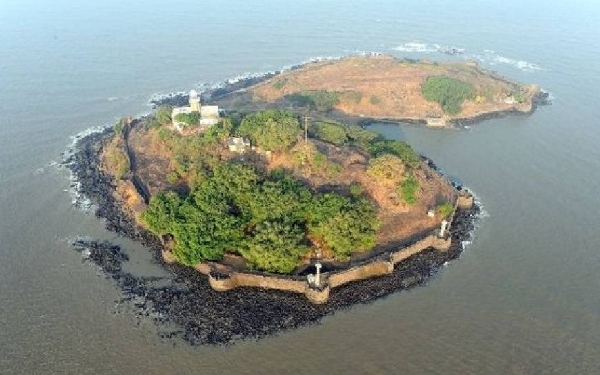
War dynamics change as we talk about the fort of Khanderi, as it is a sea fort, located in the Arabian sea, at a distance of 20km from Mumbai, securing the Maratha kingdom from naval threats. Khanderi, along with its sister fort Underi(Jaidurg) fortified the Maharashtra coast. Among the two, Khanderi was under the governance of Chhatrapati Shivaji Maharaj, while Khanderi was ruled by the Siddis.
Owing to the foresight of Chhatarapati Shivaji Maharaj, the uninhabited island of Khanderi was occupied by the Maratha forces in 1679. His foresight was eventually proven with the growing significance of the fort in the coming time to secure the Maratha kingdom from resilient naval powers like the Portuguese, who had a bold presence in the West coast.
The fort was subsequently ceded in 1818 to the forces of the British East India company at Bombay as part of the Peshwa territory.
5. Raigad
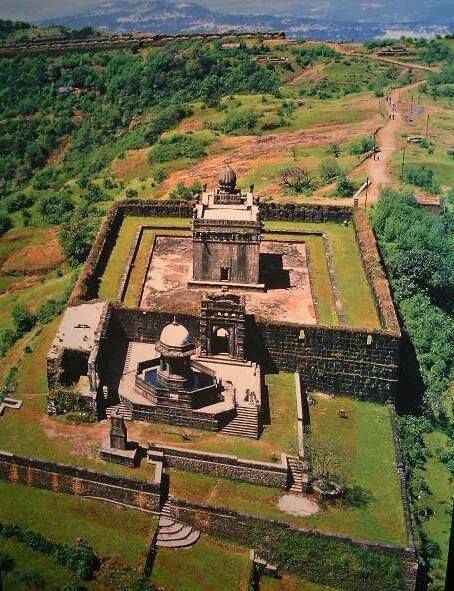
The most important fort in Maratha history, as Chhatrapati Shivaji Maharaj was coronated as the King of Maratha Kingdom here, Raigad was declared as the capital of Marathas in 1674. Originally known as the fort of Rairi, built by Chandrarao More, King of the More dynasty who were indirect descendants of the great Mauryan empire, but were feudatory of the Sultan of Bijapur.
Chhatrapati Shivaji Maharaj renovated and expanded Rairi and renamed it 'Raigad', that translates as 'the King's fort'. The main palace was constructed using wood, of which only the bases of pillars remain. Ruins of three watch towers can be seen directly in front of the palace grounds overlooking an artificial lake called Ganga Sagar Lake created next to the fort. It also has a view of the execution point called Takmak Tok, a cliff from which the sentenced prisoners were thrown to their death.
Unfortunately, the fort was looted and destroyed by the British upon siege. In 1818 the fort was bombarded and destroyed by East India Company, by the use of cannons.
Also read: NB In List | Chhatrapati Shivaji Maharaj's 5 Strategic Sea Forts: Bastions of Maratha Naval Power
“Maratha Military Landscapes of India” will be India’s nomination for recognition as UNESCO World Heritage List for the year 2024-25
— PIB in Maharashtra 🇮🇳 (@PIBMumbai) January 29, 2024
📕https://t.co/S8DRtrqDaZ 1/n pic.twitter.com/qNAFpRiu12
6. Rajgad
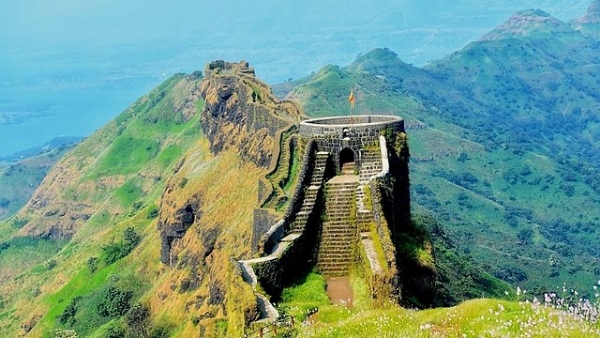
Located in Pune district, at an elevation of 1318 meters, 'Rajgad' was the first capital of Marathas, before shifting to Raigad. The Rajgad fort was built on the hill called "Murumba Devicha Dongar". Militarily speaking, the large diameter of the fort at the base that measures 40 km, makes it difficult for the enemy to besiege the fort and thus, makes the fort important for Marathas.
As per reports, the Chhatrapati has statistically stayed the most on this fort. In terms of Maratha history, the fort has been a witness to several important episodes such as the birth of Chhatrapati Rajaram, the death of Chhatrapati Shivaji Maharaj's Queen Saibai, return of Chhatrapati Shivaji Maharaj from Agra, the burial of Adilshahi Sardar Afzal Khan's head in the Mahadarwaja walls of Ballekilla and more. That's more than enough to elaborate the significance of the fort in Maratha politics.
The Treaty of Purandar, signed in 1665, with Rajput king Mirza Raja Jai Singh representing the side of Mughals, concluded with the Marathas losing 22 forts, while keeping 12 to themselves. Rajgad was one these 12 forts that Chhatrapati Shivaji Maharaji retained during such crucial times.
7. Pratapgad
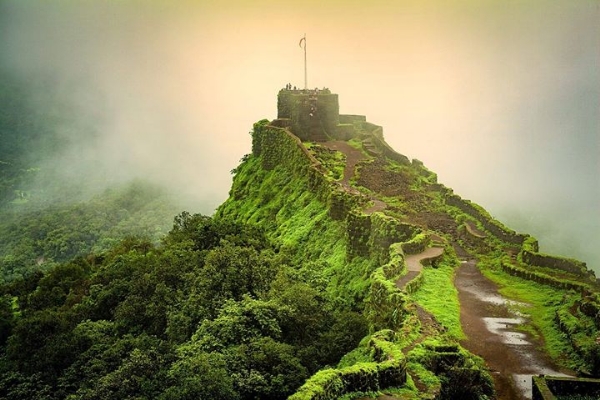
Pratapgad, as the name suggests, is a fort resembling valor of the Marathas. Strategically located in Satara, at the conjunction of Sahyadris and the Western coast of Maharashtra, making it important to take control of in order to avail access to the coastal region. Chhatrapati Shivaji Maharaj had commissioned his prime minister Moropant Trimbak Pingle, to look after the construction of Pratapgad. The task was completed in 1656.
The fort is renowned for its Afzal Khan episode of Maratha History. The Battle of Pratapgad that was fought between Chhatrapati Shivaji Maharaj and Adilshahi General Afzal Khan was fought on Nov 10, 1659. This was the first major test of the fledgling kingdom's army, and set the stage of the establishment of the Maratha empire. The battle was decisive for Chhatrapati's entry in the Konkan region and thus was the fort.
8. Suvarnadurg
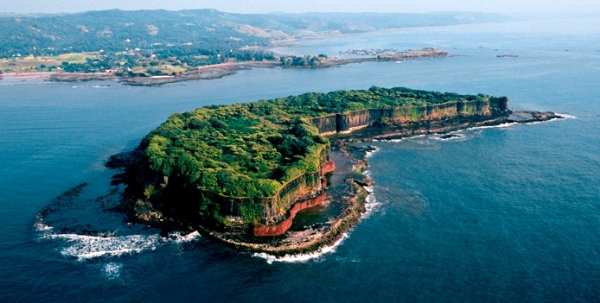
Located in the sea along Maharashtra, near Harnai in Konkan, the fort of Suvarnadurg includes another land fort called the 'Kanakadurga'. Chhatrapati Shivaji Maharaj built the fort in 1660. The name 'Suvarnadurga', translates as "Golden Fort". The reason to be called so by the Marathas is that the fort was considered as the pride of the Maratha kingdom. In several references the fort is described as "feather in the golden cap of Marathas".
The purpose of building 'Suvarnadurg' was to install reliable naval defence station for the Maratha Navy. The fort was relied upon to counter enemy attacks. Besides, the fort represents another flourishing aspect of the Maratha Kingdom as it also had a ship building facility, owned and developed by the Marathas.
9. Panhala Fort
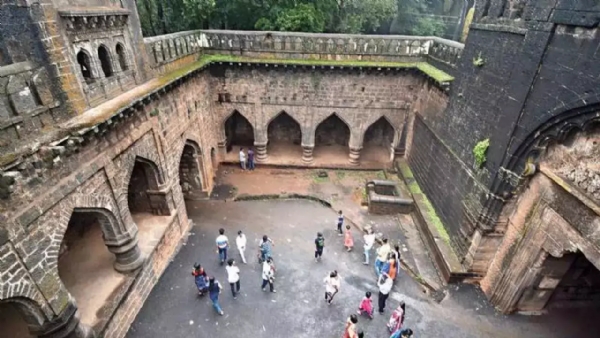
The Maratha fort of Panhala is renowned for the Battle of Pawankhind, when Maratha Mavalas lost their lives to save the life of their king Chhatrapati Shivaji Maharaj, an incident considered as a precedent of sacrifice & valor. The fort of Panhala is strategically located keeping an eye on the 'Pawankhind', that before the battle was known as 'Ghodkhind'. The role is important as the pass in Sahyadris was a major trade route from Bijapur, coming to the interior of Maharashtra and further connecting to the coastal areas.
The fort, however, was not built by Chhatrapati Shivaji Maharaj and traces back its history to ancient Indian dynasties. Built between 1178 and 1209 CE, Panhala was among the 15 forts built by Shilahara ruler Bhoja II. Eventually, the fort had fallen in the hands of the Adilshahi of Bijapur, but later in 1659, as there was chaos after the death of the Bijapur General Afzal Khan, Shivaji took advantage of the situation and took control Panhala from Bijapur.
10. Vijaydurg
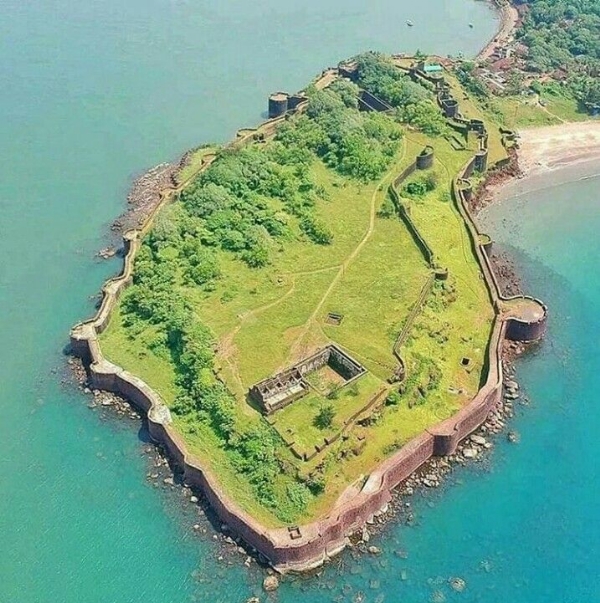
Another fort built by Shilahara ruler Maharaja Bhoja II that was earlier named as "Gheria" on being situated close to the village of "Girye", wascaptured by Chhatrapati Shivaji Maharaj from Adilshah of Bijapur in 1653. The fort was thus renamed as "Vijay Durg". The fort of Vijaydurg was referred to as "Eastern Gibraltar" by European invaders, considering the virtually impregnable nature of the structure.
It is also believed that Chhatrapati Shivaji Maharaj during his lifetime hoisted the saffron flag on Maratha forts only twice and Vijaydurg was one of those, 'Torana' being the other one. Strategically, the fort is built along 40 km long Waghotan - Kharepatan creek, which is why large vessels couldn't enter the shallow water while Maratha warships could be anchored in this creek and yet remain invisible from the sea. This amazing feature of the fort provided stealth to the Marathas in naval wars.
Also read: Shivaji Maharaj's Armed Forces, Ordnance Management, Military Strategy: RELEVANT TODAY (Part 3)
11. Sindhudurg
Located off the coast of Maharashtra's Malwan, Chhatrapati Shivaji Maharaj built the fort of Sindhudurg, under the supervision of Hiroji Indulkar. The construction of the fort started in1664 and with its completion happening after 3 years. With a tough foundation built with over 4000 mounds of iron used in casting it, the sea fort of Sindhudurg is believed to be constructed in such a fashion that it could not be seen easily by the enemy coming from the Arabian Sea.
The main entrance is concealed in such a way that no one can pinpoint it from outside.
12. Gingee Fort
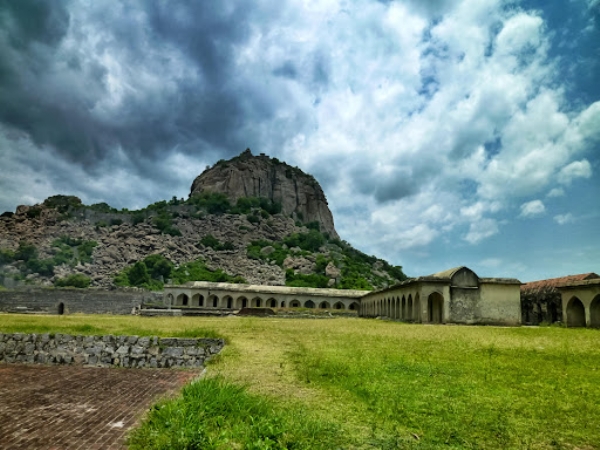
The fort of Gingee is extremely significant in consideration of the geo-political milieu of medieval India. According to reports, originally the site of a small fort built by the Chola dynasty during the 9th century AD, Gingee Fort was modified by Kurumbar while fighting the Cholas and again by the Vijayanagar empire during the 13th century.
The fort was built at a strategic place to fend off any invading armies. It was further strengthened by the Marathas under the leadership of Shivaji in 1677 AD. He recaptured it from the Bijapur sultans who had originally taken control of the fort from the Marathas. During Aurangzeb's campaign in the Deccan, Shivaji's second son who had assumed the throne, Chhatrapati Rajaram, escaped to Ginjee and continued the fight with Moghuls from Ginjee. The Mughals could not capture the fort for seven years in spite of laying siege. The fort was finally captured in 1698, but not before Chhatrapati Rajaram escaped.
--


